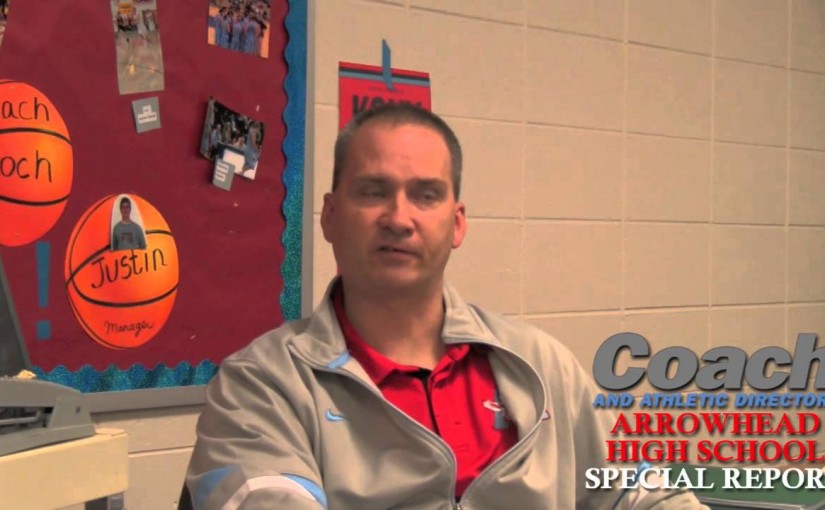Get to the Line More with Isolation Plays
Isolations can be very effective in not only exploiting an opposing team’s individual player who has accumulated a high number of fouls late in the game but can also be very effective in actually getting teams in foul trouble during the early stages of the game.
There is a certain mindset that a player has in terms of how he/she plays when he/she has drawn a certain number of fouls, as players are always worried about not picking up another one. I think coaches, generally, make the mistake of waiting for opposing players to get into foul trouble later in the game rather than doing things as part of the gameplan to get them into foul trouble earlier. And, I definitely think coaches are missing the boat by waiting for opposing players to pick up their fourth foul before attempting this approach.
Foul trouble is a mindset with players, and thinking about it affects their play. My focus as a coach was always to go after opposing players immediately when they were hit with their third foul. Here’s why: When a player receives their third foul, the thought immediately comes into the player’s mind that, “I have to be careful, so I don’t get my fourth and get taken out of the game.” The coach, in fact, will routinely put this thought in the player’s mind when saying, “Don’t pick up your fourth,” so, consequently, the player will be lackadaisical on defense. This is the perfect time to go after that player. Why wait until the player gets their fourth foul before attacking them?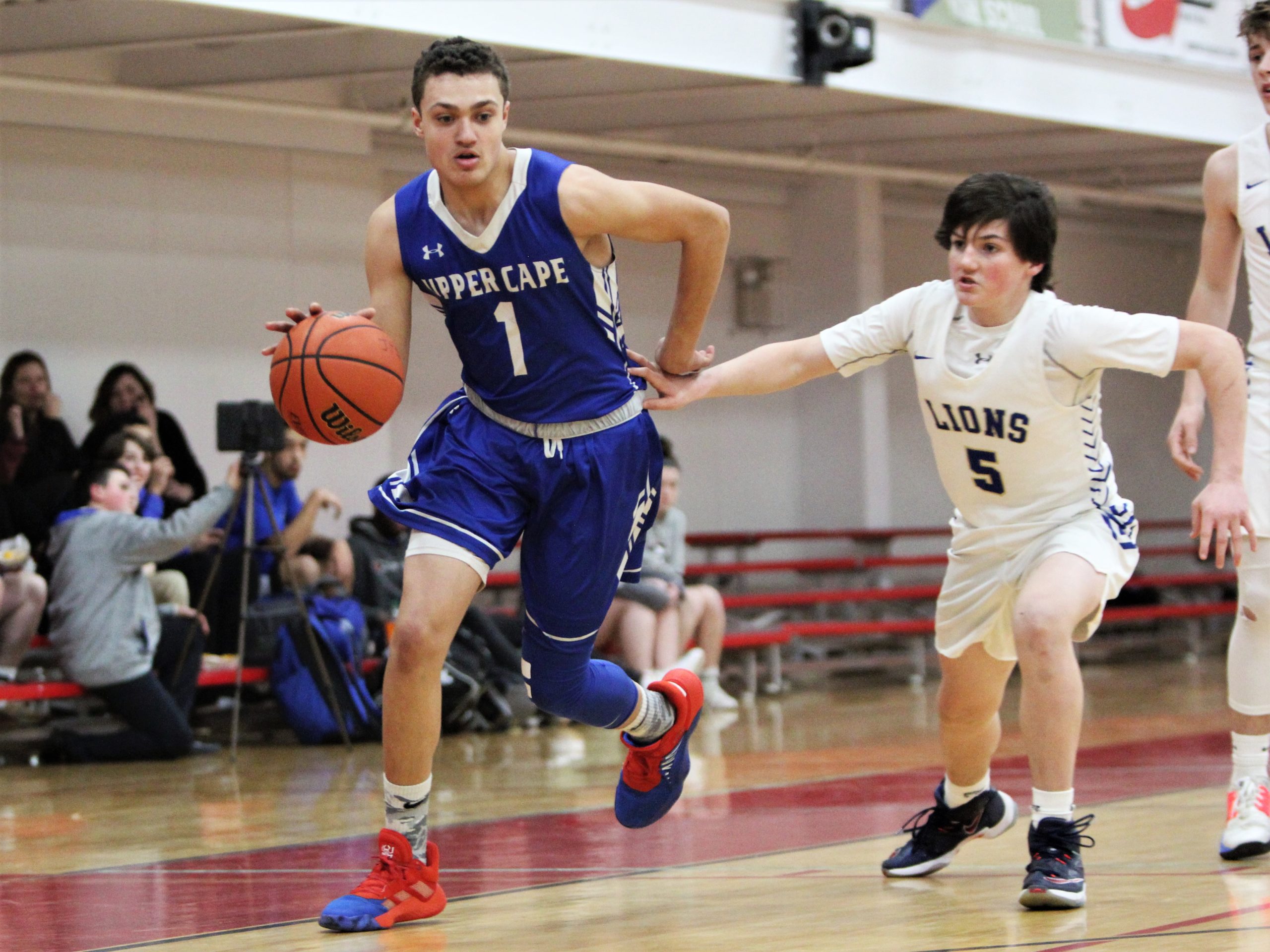
My scorekeeper and assistant coaches were always instructed to let me know as soon as an opposing player received their third foul. That was always part of my game strategy.
When I called out isolation plays, I always used code names that were simple for my players to understand, but difficult for the opposing coach to figure out. For example, for a particular isolation play, I would call out a certain color or a state depending on which isolation play I wanted the players to use. I have seen coaches use different names of states for different plays, but whenever I called out a state’s name, it would be for the same play. Knowing that the other coach is listening, particularly when they are scouting my team, and trying to figure out what state is attributed to each play, the second or third time I would call out, “This time run Kansas,” and it would be the same play just with a different name. I would also incorporate colors in place of states with the understanding that the team would run the same play.
» ALSO SEE: Integrating Ball Screen & Rim-Runs into Man Offenses
Another trick I used when I decided to go after a certain player in isolation, I’d call a play with said player’s number doubled. For example, if the defender in foul trouble was guarding my player wearing ‘22’, I would call out, “Purple 44.” If I wanted my player wearing ‘14’ to get in that position, I would call out, “Iowa 28.” This, hopefully, confuses the other team while my team knows what to execute.
Here are a few isolation plays that are simple to run, but are very effective in getting opposing players in foul trouble once you decide who to target.
Isolation Play with Designated Player w/Ball while Teammates Exchange Vertical Positions
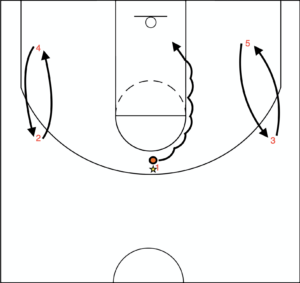 Designated player handles the ball in the middle area of the open court while teammates on each side exchange places to keep defenders occupied on each side. That way, the middle area will be more open for the designated player with the ball to attack the opposing player in foul trouble and, hopefully, get a trip to the charity stripe in a one-on-one situation.
Designated player handles the ball in the middle area of the open court while teammates on each side exchange places to keep defenders occupied on each side. That way, the middle area will be more open for the designated player with the ball to attack the opposing player in foul trouble and, hopefully, get a trip to the charity stripe in a one-on-one situation.
Many times, a defender from either side of the floor will leave their defensive assignment to help stop the penetration. When this occurs the player with the ball has the option to dish off to the now freed-up teammate, who should also attack the basket.
Isolation Play with Designated Player w/Ball while Teammates Exchange Lateral Positions
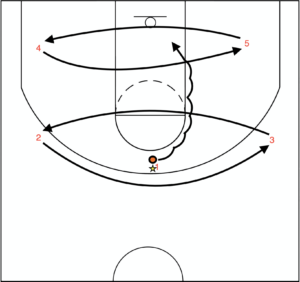 This wrinkle of the isolation play gives a large area for the ball-handler to operate in a one-on-one situation. As a result, it will put a lot of pressure on the defender to cover a bigger surface area without surrendering a foul while your player is attempting to get to the basket.
This wrinkle of the isolation play gives a large area for the ball-handler to operate in a one-on-one situation. As a result, it will put a lot of pressure on the defender to cover a bigger surface area without surrendering a foul while your player is attempting to get to the basket.
This play is especially effective when a defender from either side leaves their assignment to help, giving a perfect opportunity to pick up an assist on an uncovered teammate crashing to the rim. When this is being practiced there should be an emphasis on the designated player with the ball to pass of to the teammate who has been left open due to the help defense. This play should result in one of three things if the play is run correctly, a foul will be drawn, a layup score by the designated player with the ball, or a pass to an open player under the basket.
Isolation Play Designed to Clear Out Entire Side of Half Court
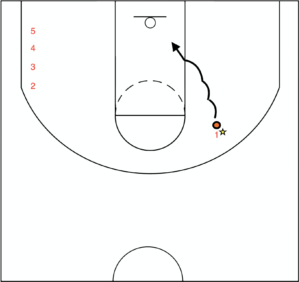 Clear-out plays designed to open up a complete side of the court for a designated player to take their defender one-on-one to the basket to draw a foul. Because your designated player has the entire side of the court to operate in, it will put a lot of pressure on the defender to free up the middle of the court. The ball-handler should be ready to make a pass when the help defense collapses.
Clear-out plays designed to open up a complete side of the court for a designated player to take their defender one-on-one to the basket to draw a foul. Because your designated player has the entire side of the court to operate in, it will put a lot of pressure on the defender to free up the middle of the court. The ball-handler should be ready to make a pass when the help defense collapses.
Isolation Play Designed for Two Players Simultaneously
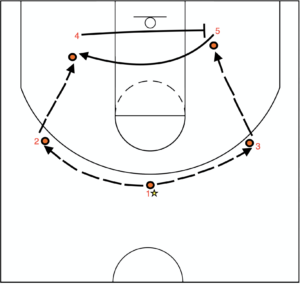 This play can be used to exploit either one or two opposing players who are in foul trouble, and doubly effective with two opposing forwards who in foul trouble. Place two offensive players who the opposing players in foul trouble are guarding along the baseline close the basket, one either side. Then fan out your three players at the point and at each wing, with those three swinging the ball back and forth while the two players down low set cross screens for one another. This will, hopefully, free up at least one post player. Each defender will have to make a quick decision as to switch or fight through the screen without much time as the pass is coming in quickly. With proper patience, this play should result in a pass to an open player under the basket resulting in either a foul or a basket or a three-point play.
This play can be used to exploit either one or two opposing players who are in foul trouble, and doubly effective with two opposing forwards who in foul trouble. Place two offensive players who the opposing players in foul trouble are guarding along the baseline close the basket, one either side. Then fan out your three players at the point and at each wing, with those three swinging the ball back and forth while the two players down low set cross screens for one another. This will, hopefully, free up at least one post player. Each defender will have to make a quick decision as to switch or fight through the screen without much time as the pass is coming in quickly. With proper patience, this play should result in a pass to an open player under the basket resulting in either a foul or a basket or a three-point play.




